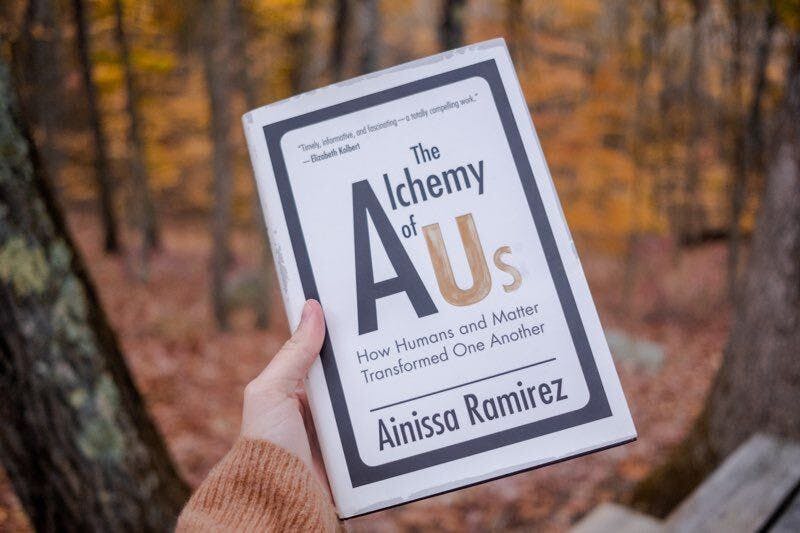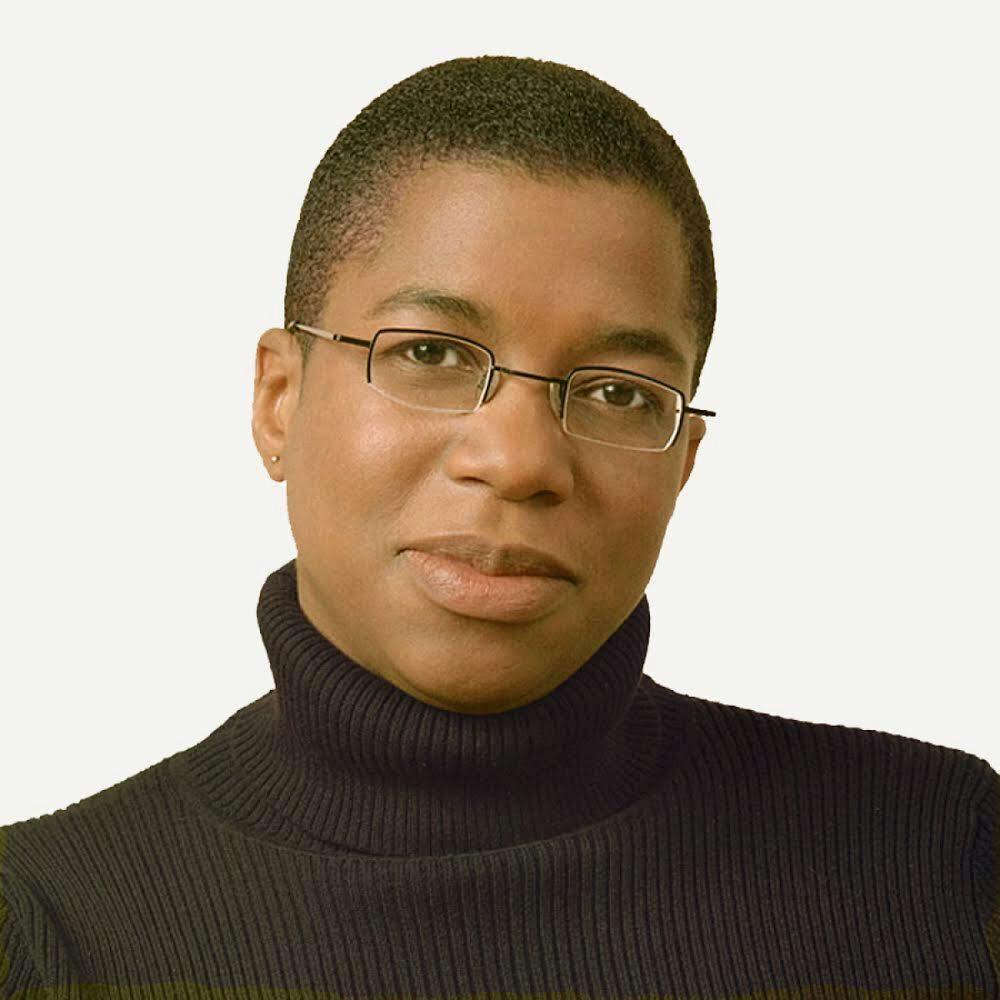As a student at Brown, Ainissa Ramirez ’90 would spend countless hours studying at her usual spot on the fifth floor of the Sciences Library. Perched five stories above Thayer Street, she would review her engineering or chemistry material until her friends reliably found her and walked her to the Sharpe Refectory.
Now, Ramirez is a so-called “science evangelist,” sharing science and working to make it more accessible within and beyond the scientific community. In February she published her third book, “The Alchemy of Us: How Humans and Matter Transformed One Another.”
Growing up in Jersey City, New Jersey, a young Ramirez found inspiration on her television: shows like PBS’s “3-2-1 Contact” illustrated the creativity and joy underlying science. The show was a form of science education that immediately sparked her interest because one of the cast members was a Black girl. “When I was growing up, there weren't too many Black faces on television, and a Black face in a positive way, using her brain, was just significant.”
When it came time for Ramirez to apply to college, she was determined to pursue engineering, but she didn’t want to be entirely siloed into it. She chose Brown because “the school was designed so that you could seamlessly go from one thing to another.”
But during her freshman year, those hours in the SciLi ticked by as Ramirez tried to make sense of coursework that seemed designed to facilitate failure and felt devoid of the inspired passion she had experienced as a child. In the introduction to “The Alchemy of Us,” Ramirez remembers her first experience in big lecture classes negatively: “The science lectures were dry and the lessons were designed to weed out students,” she wrote.
Ramirez struggled to keep up in her first chemistry class, but eventually made it through with help from Professor Edelgard Morse, who taught a “tutorial” version of the course designed to give students more personalized help, she said. “Out of my friends, there were nine of us who knew each other on the first day freshman year, and only four of us made it through engineering,” she added.
But then, something changed. Ramirez often recalls the first day of an introductory materials science course taught by Professor Ben Freund: “I was about six rows up, where I always sat, in the middle — not too much in the front, because you don’t want to be too eager — and not too much in the back. But, you know, positioned such that I was interested.”
Then Freund started teaching. He said: “‘The reason why we don't fall through the floor, the reason why my sweater is blue and the reason why the lights work, all has to do with the interaction of atoms.’”
In retrospect, Ramirez’s experience in that lecture was life-changing. She started to look around, take everything in, and consider each item around her for its atomic makeup. “I knew science was fun, because I had good experiences when I was young. And here it was again, when someone explained it to me,” she wrote.
So Ramirez chose to study materials science. After graduating from Brown, she earned a PhD in the subject at Stanford University, then worked at Bell Labs before returning to academia as a professor with her own laboratory at Yale. She eventually decided to break from that trajectory and chart her own path.
Combining her passion for science education with her deep understanding of materials science, “The Alchemy of Us” reads like an extension of the experience Ramirez had in Freund’s class — it is an exploration of the ways in which matter affects every aspect of being, just as humans have impacted all scientific discoveries.
[caption id="" align="aligncenter" width="800"]

“This is a Brown book,” Ramirez said, “This is a result of my Brown education.”
In the book, Ramirez defines materials science as “a bit like my home state of New Jersey, because it is wedged between two more well-known entities. For New Jersey, they are New York City and Philadelphia. For materials science, they are chemistry and physics.”
But “The Alchemy of Us” doesn’t read like a materials science textbook nor a dense anthology on scientific progress. It covers eight different scientific concepts and inventions, but also fully portrays the characters that are integral to their histories, and makes everyday connections in an attempt to make science’s role in society more understandable.
The first figure introduced in the book is Ruth Belville, also known as “the lady who sold time,” Ramirez said. “I found her when I was reading a thick book on Horology, the study of time, and she was one sentence.” But, “I actually thought that she was the most fascinating ... you really have to comb through all the archives to find those gems,” she added.
The introduction of Belville so early on in the book was an intentional choice to highlight the types of people most scientific histories forget — namely, women and people of color.
Ramirez said that when she first set out to draft a book on inventions, she found herself only reading and writing about white male scientists of European descent. “While I was writing the book, I was actually starting to not feel so well.” She asked herself: “How can I spend years on a book where my reflection is not even in this thing?”
So she shifted the framework of her book. Her goal was “to find what (each scientist’s) foibles are, what their failures are, what their habits are, what their favorite color is, anything … so that I can resonate with them.”
For an example, she cited J.J. Thompson, the chemist awarded the Nobel Prize in 1906 for discovering the electron: “When I found out that he was an absolute klutz, I loved the guy.”
“Not everybody is going to fit the same demographic as these guys, but we all are human,” she said. So she scanned through archives, and read around 400 books in an effort to illuminate little bits of humanity, to ensure that any reader might be able to find some piece of information to latch on to.
A review of the book published by Science Magazine praised this aspect of Ramirez’s work, noting that Ramirez is “keen to debunk the idea that materials arise from flashes of insight experienced by extraordinary individuals, instead painting a picture of a diverse range of people from all walks of life driven by love, passion, and intellect.”
Ramirez stresses the importance of science education for non-scientists.
“I knew it wasn't going to be like any other book that was out there. Because there aren't too many people like me who write about this stuff. And I was also willing to extend a hand to people who don't really feel invited into science,” she said.
Though it might seem like pure fascination with science has been a through line in Ramirez’s life — an interest first piqued by PBS, then fostered at Brown, Stanford, Bell Labs and Yale — she said that she wouldn’t have foreseen the path she is on now while sitting in that Barus and Holley lecture hall. “I didn't feel confident as a writer when I was at Brown. And I definitely didn't feel all that confident as an engineer,” she said.
But, “if you follow that compass, ... the thing that's resonating with you … if you follow that, what happens is that you'll find the thing that you were specially tailored to do or to be.”





